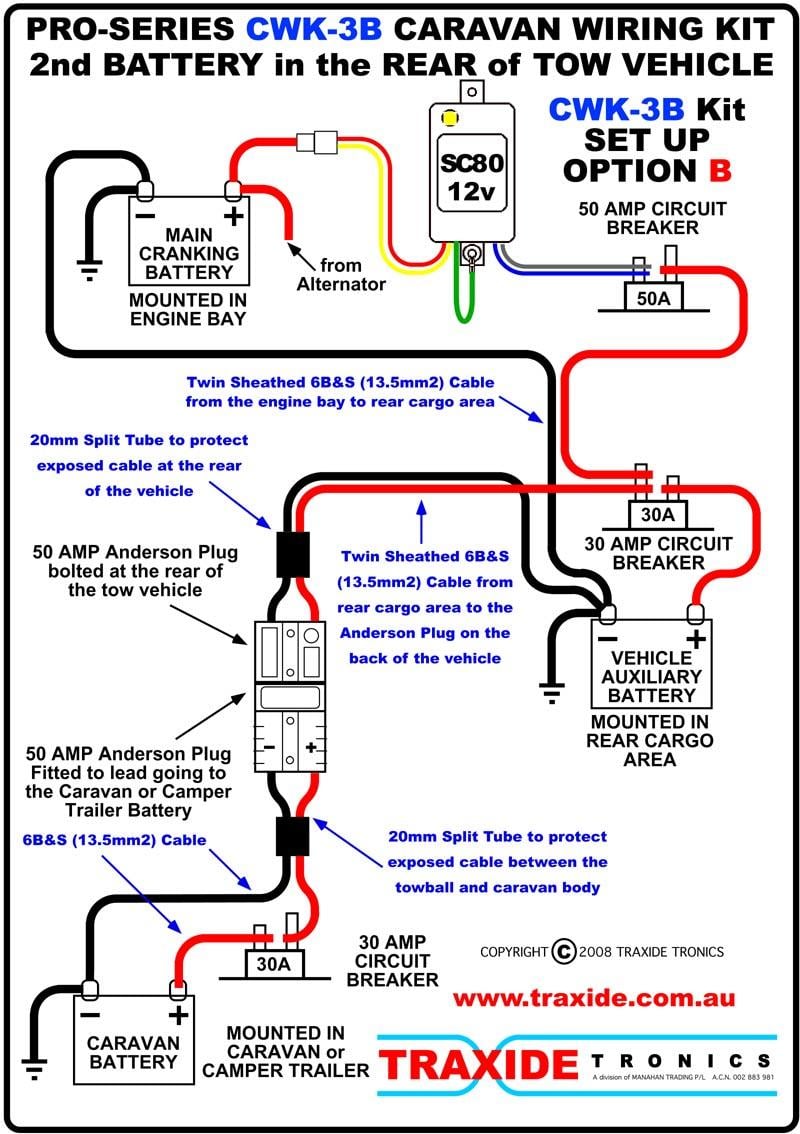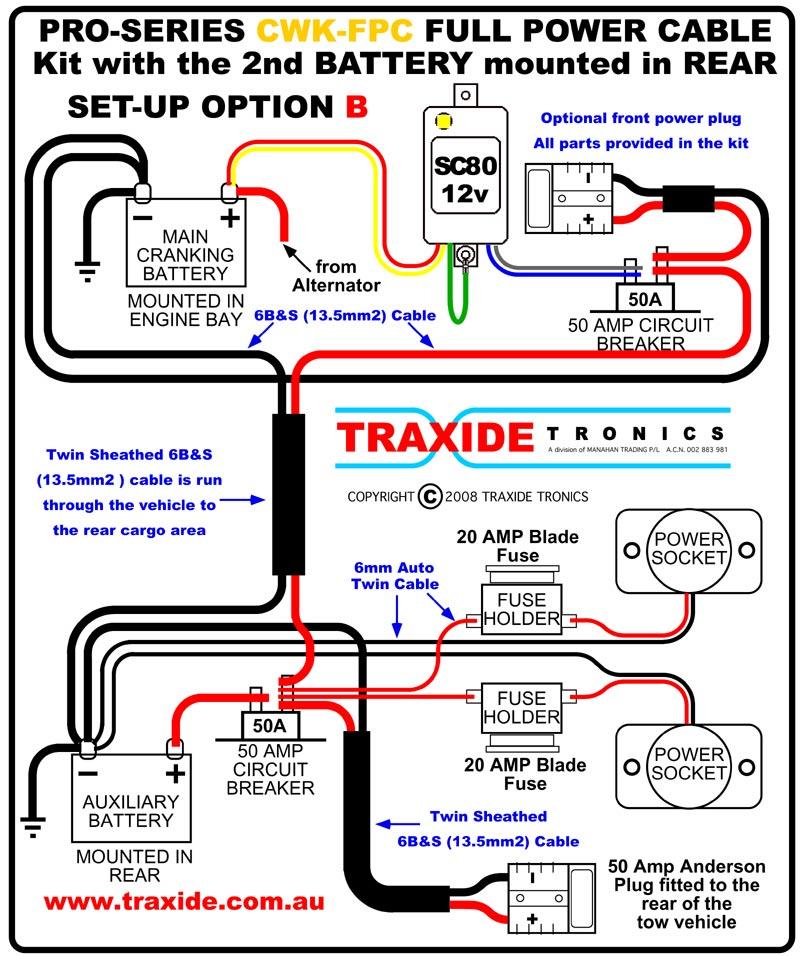
Originally Posted by
ytt105

Dual/triple battery wiring question?
RR P38 with standard battery in the front, 65 amp/hour deep cycle in the boot, 100 amp/hour Fullriver deep cycle in the camper trailer which is charged by an 80 watt solar panel. My intended wiring system is:
Twin 3 or 4 BS wires from original battery to boot battery via a voltage sensitive relay and 50 amp fuse or circuit breaker?
Twin 6 BS wire from boot battery to 50 ltr Wacoe fridge in boot
Twin 6 BS wire from boot battery to trailer battery via 50 amp Anderson plug
Twin 6 BS wire from trailer battery to three way fridge in trailer, via ignition operated relay so 3 way fridge is not on unless car is running.
How am I going, any comments?




 Reply With Quote
Reply With Quote




Bookmarks